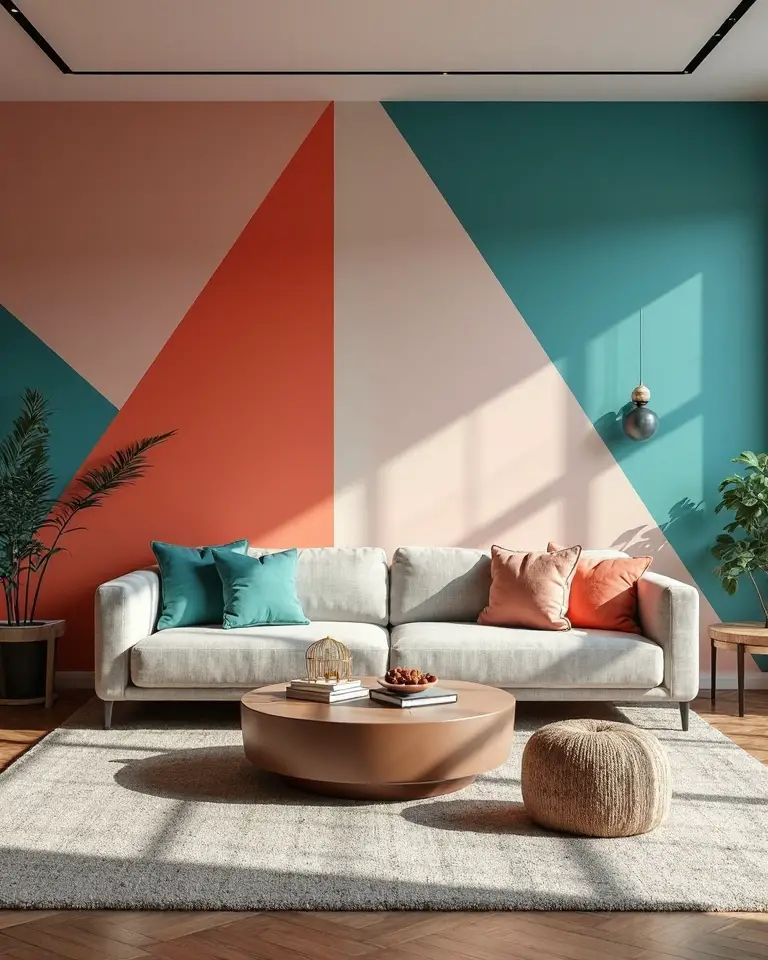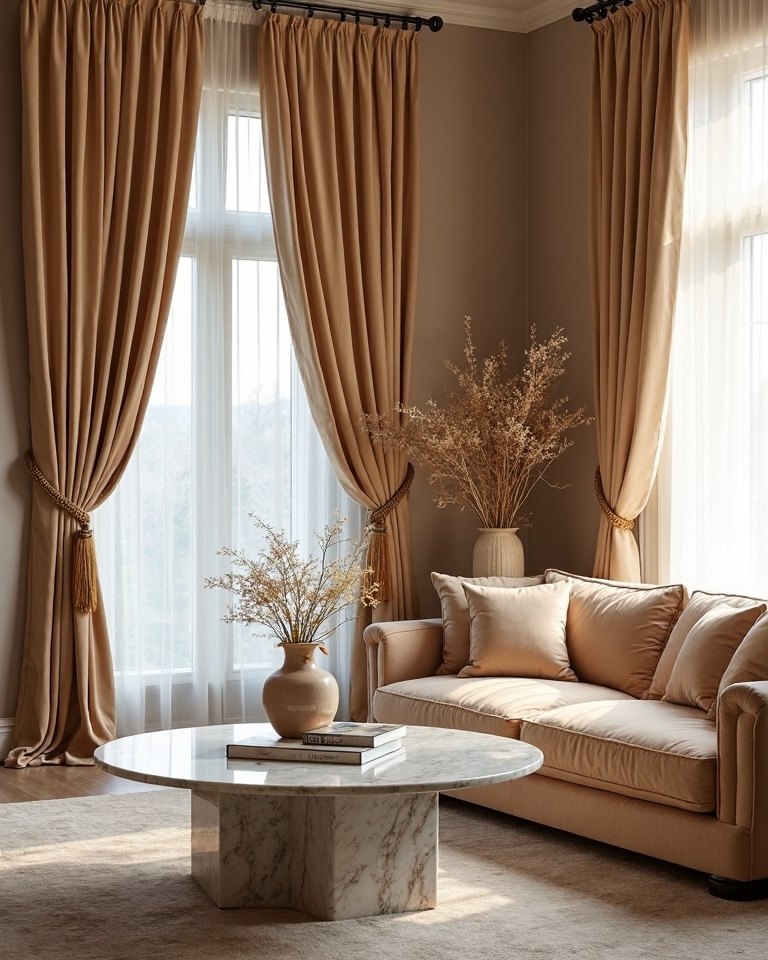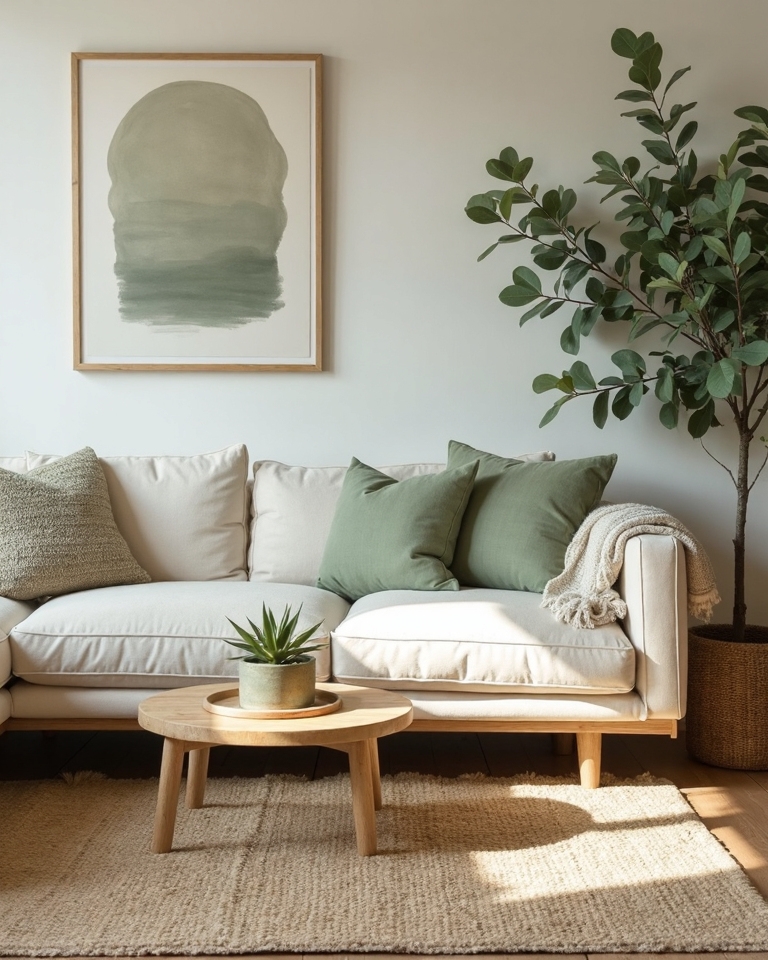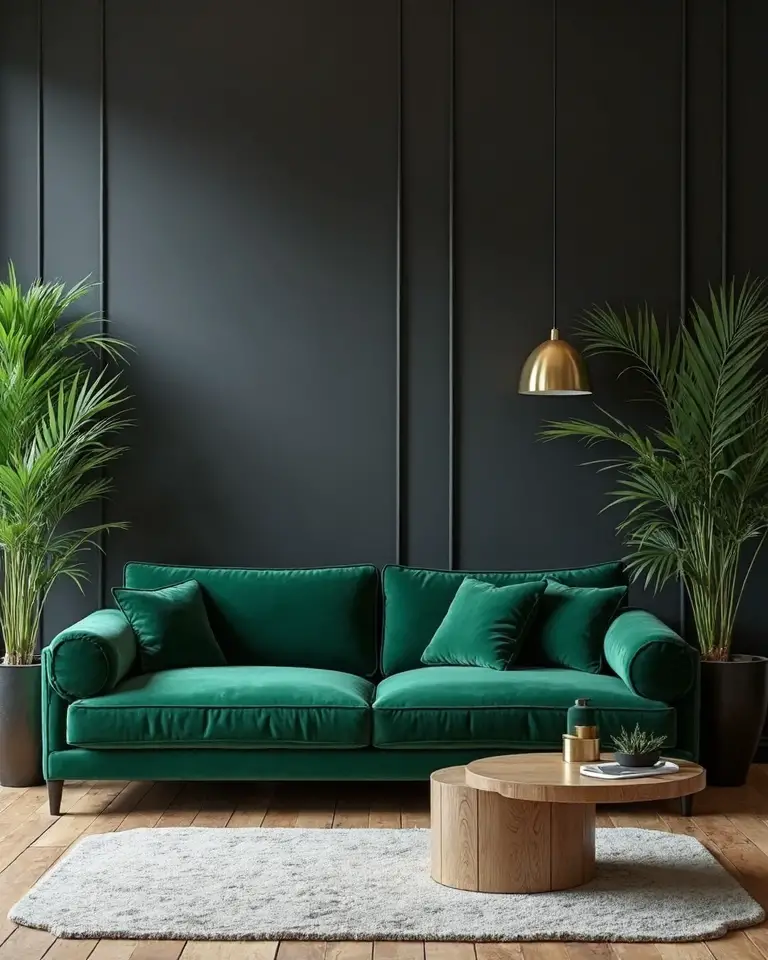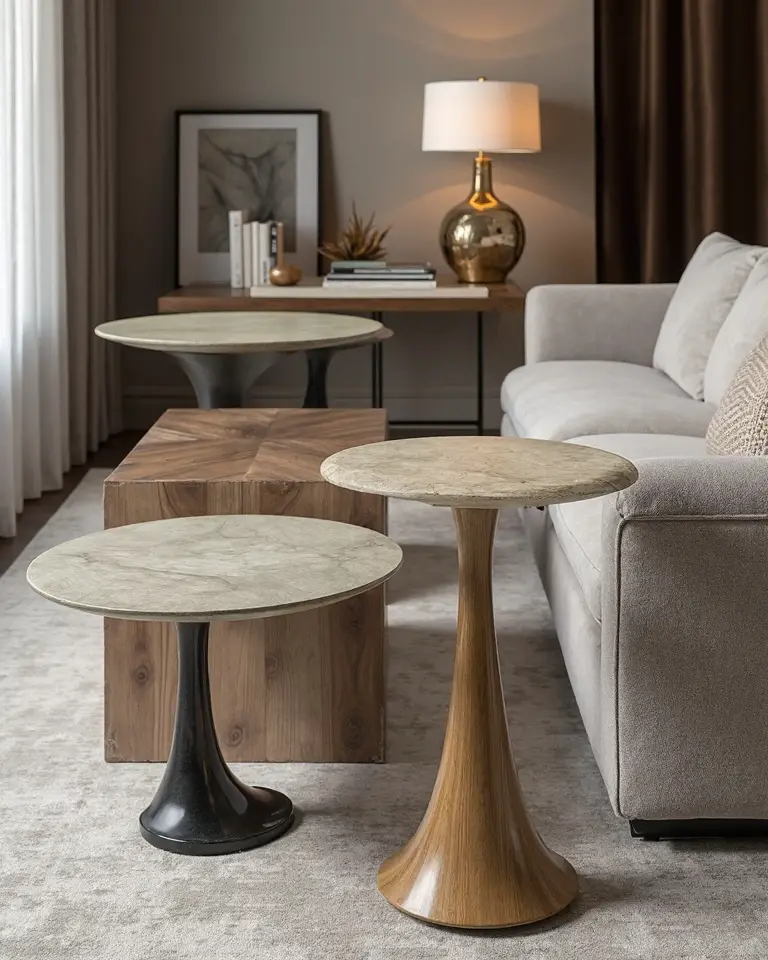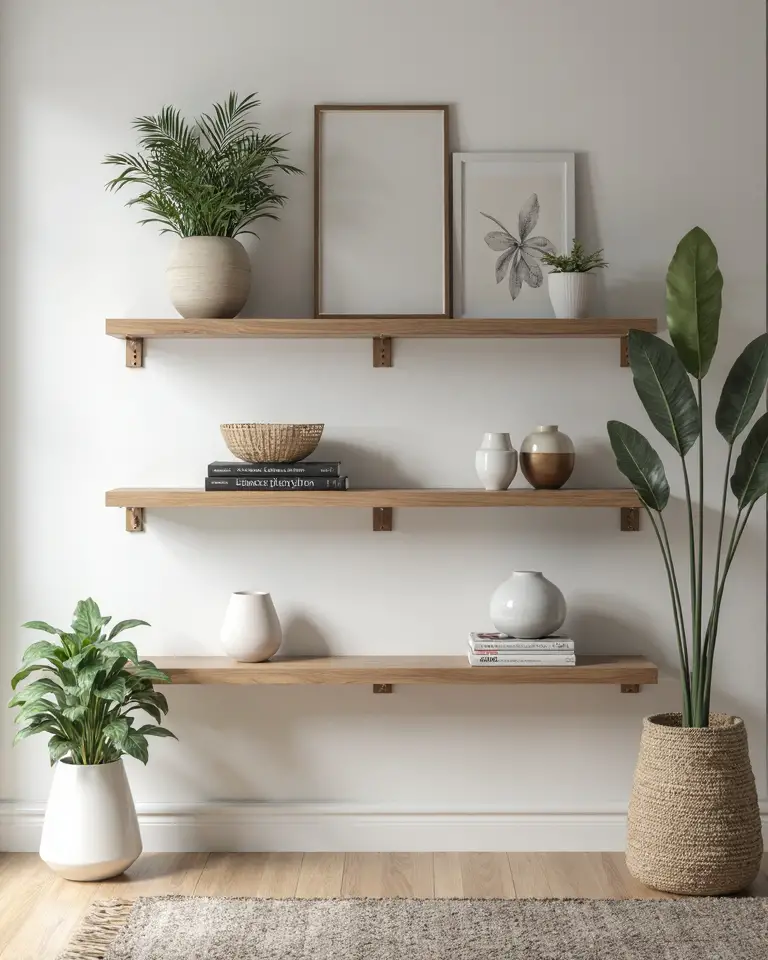20 Attic Living Room Ideas That Transform Small Spaces
Transform your cramped attic into a stunning living room with these 20 ingenious ideas that maximize every awkward angle.
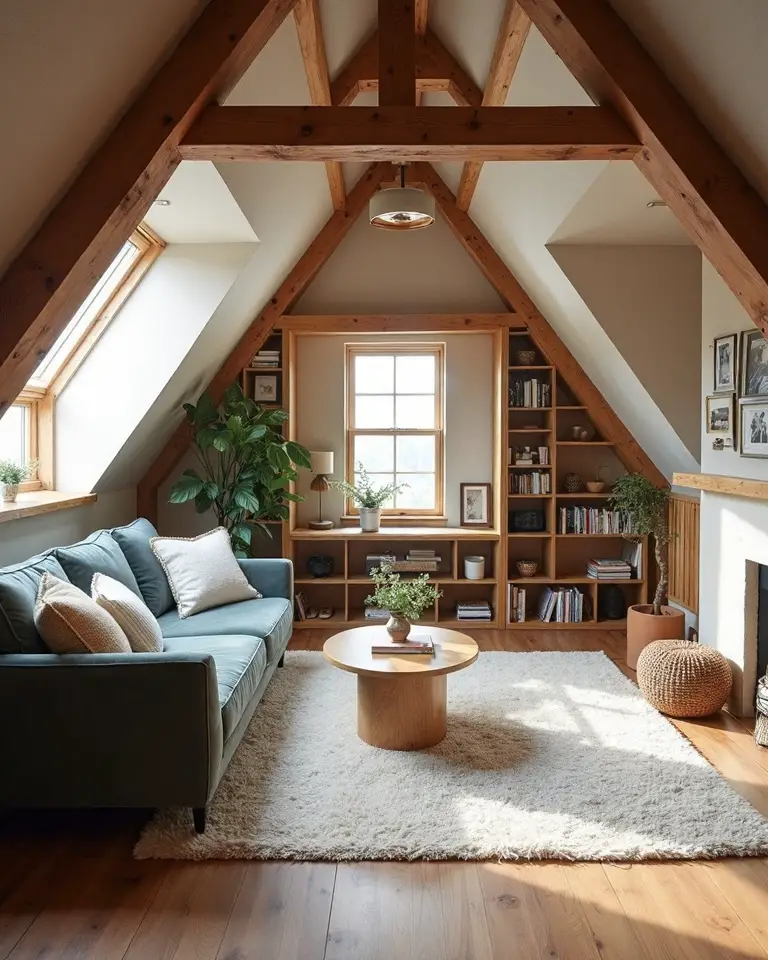
You’ve got an attic space that’s pleading for modification, but those slanted walls and tight corners seem challenging. Don’t let unconventional angles intimidate you – they’re actually your secret tool for crafting a uniquely cozy living room that guests will recollect. With the right approach to furniture placement, lighting strategies, and smart storage solutions, you’ll turn those perceived limitations into breathtaking structural benefits that optimize every square foot of your raised sanctuary.
Embrace Sloped Ceilings as Architectural Features
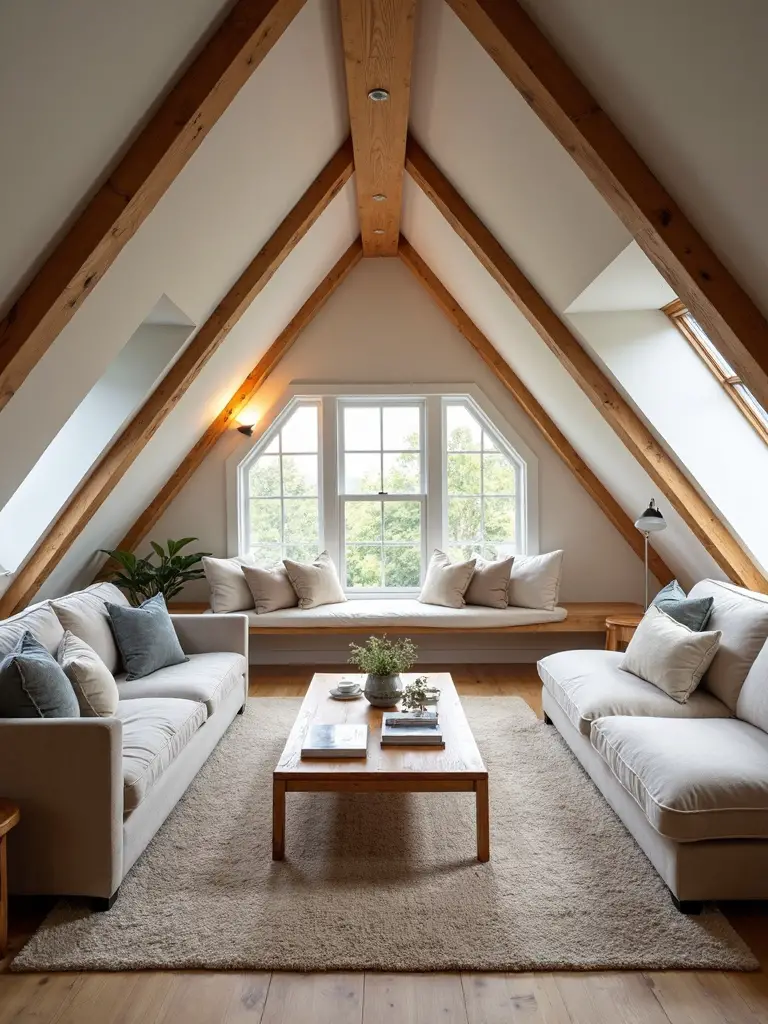
While many homeowners view attic sloped ceilings as design obstacles, these angled surfaces actually offer unique opportunities to create mesmerizing architectural features in your living room. You can remodel awkward angles into alluring focal points with the right lighting approach.
Install integrated LED strip lights along the ceiling’s natural lines to emphasize their geometric beauty while establishing a cozy atmosphere. This indirect lighting technique visually opens your space and makes it feel more welcoming.
Paint your sloped walls and ceiling the same color to create seamless continuity that enhances perceived height and reduces visual constriction.
Create a Striking Feature Wall Focal Point
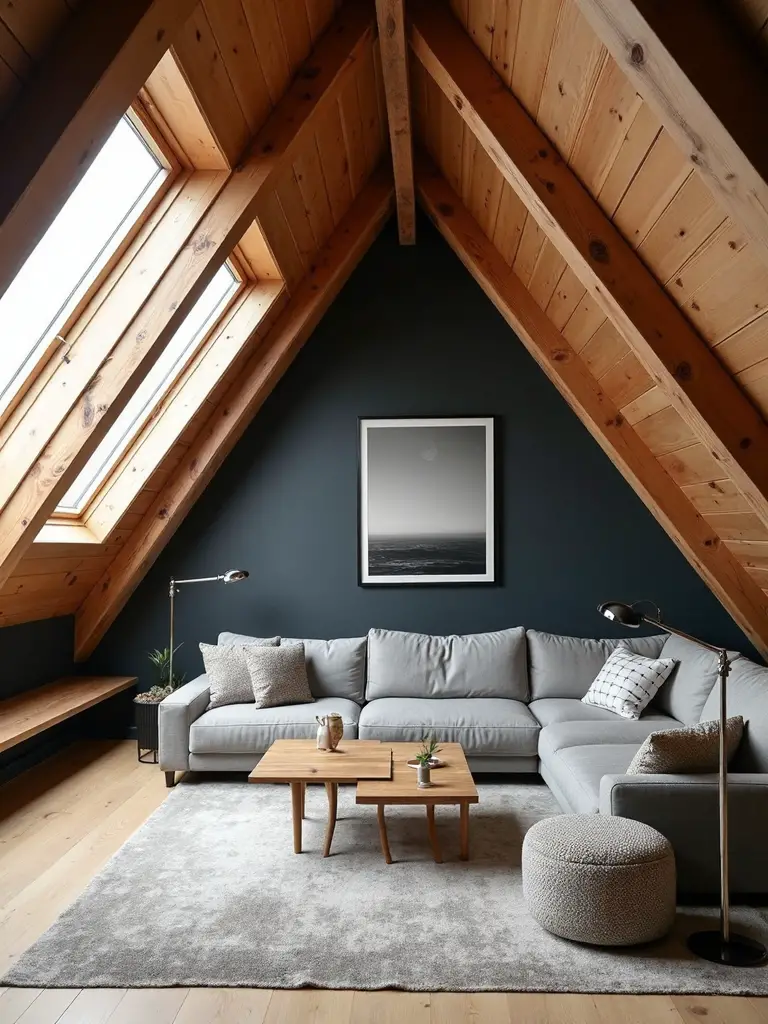
Beyond optimizing your ceiling angles, you can establish a commanding visual anchor through a carefully planned feature wall that alters your attic living room’s focal point.
Remodel one wall into your room’s centerpiece using textured materials like natural stone or industrial finishes that contrast beautifully with modern furniture. The feature wall creates distinct architectural lines while anchoring your space with purposeful structure.
Add backlighting behind stone surfaces to highlight natural variations and create stylish visual effects. Soft lighting emphasizes textures, producing a cozy atmosphere that transforms your attic into a sophisticated living area with modern edge.
Install Built-In Seating and Storage Solutions
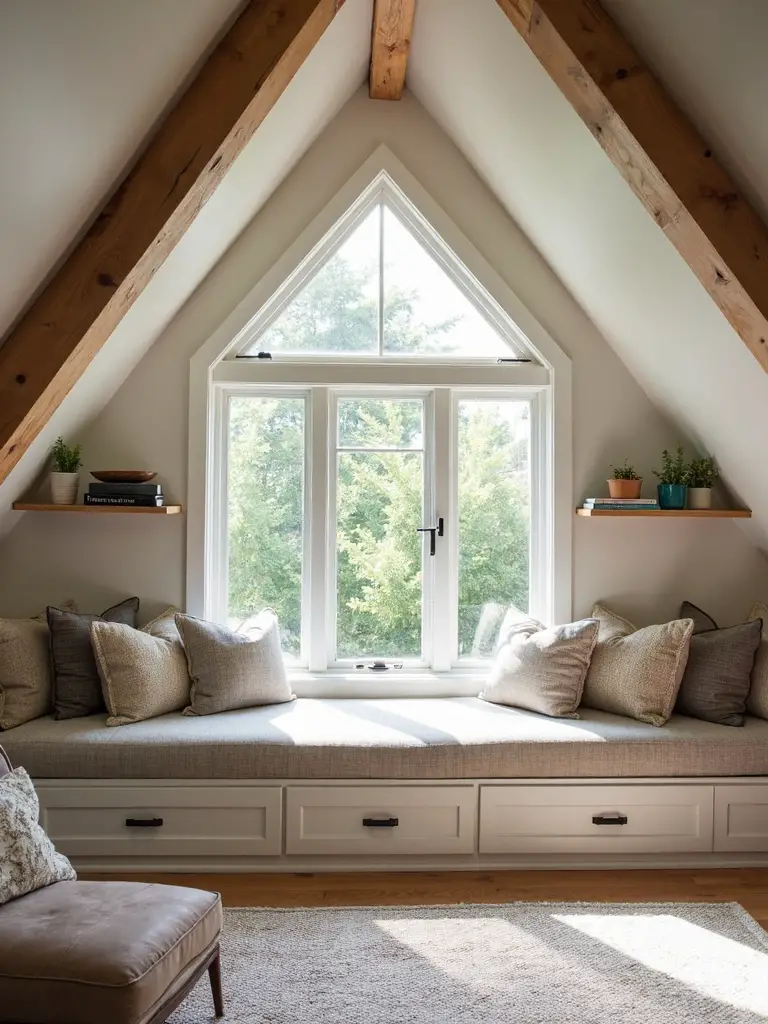
Modify your cramped attic living room into a highly functional space by incorporating built-in seating and storage solutions that work seamlessly with your room’s unique design. A built-in window seat creates comfortable seating while providing hidden storage underneath for blankets and seasonal items.
Custom cabinetry designed specifically for sloped walls maximizes every inch of available space without wasting awkward corners. Built-in bookcases anchor your room visually while offering practical organization for books and decorative items.
Complete the conversion with recessed lighting that keeps walkways clear and creates ambient illumination without consuming precious floor space in your compact attic retreat.
Position Furniture to Maximize Natural Light
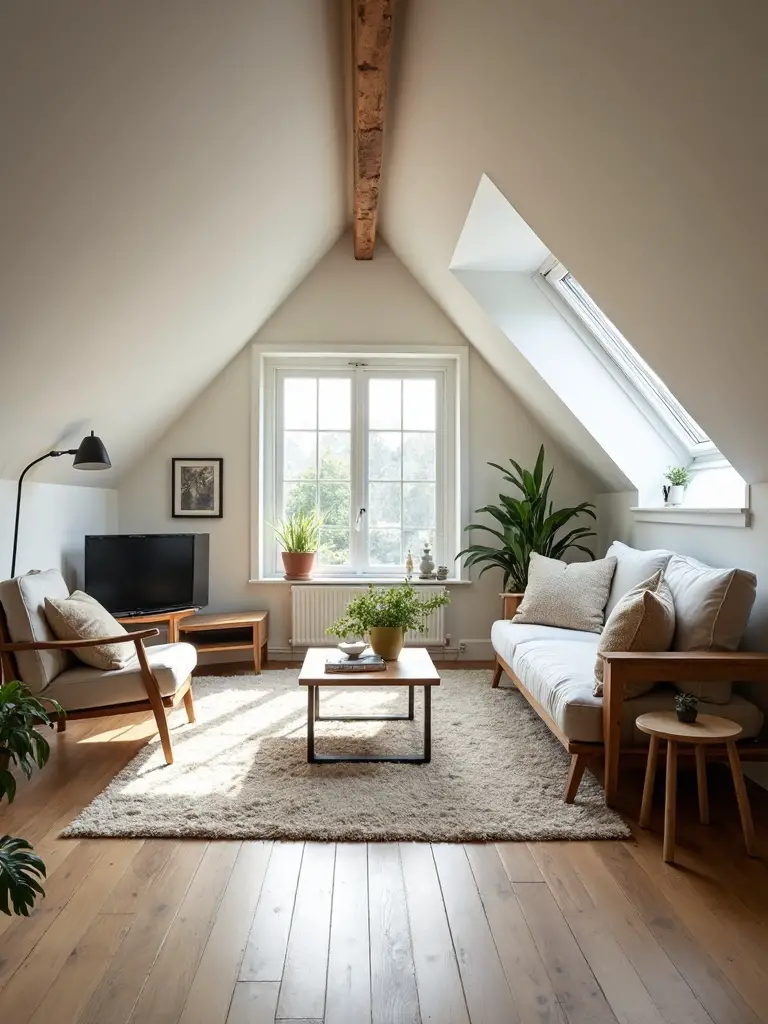
After establishing your built-in storage foundation, you’ll want to arrange your furniture thoughtfully to capture every ray of natural light that enters your attic space. Strategic furniture placement prevents blocking windows and skylights, allowing sunshine to flood your room naturally.
Position seating areas directly near dormer windows or skylights to maximize sunlight exposure and create an airy atmosphere.
Choose lightweight, low-profile furnishings that won’t visually overpower your space or obstruct light flow. Avoid bulky pieces that make the room feels cramped. Install sheer curtains or adjustable blinds for light control. This thoughtful arrangement will enhance the overall brightness and openness of your attic living room.
Use Minimal Headboards to Enhance Openness
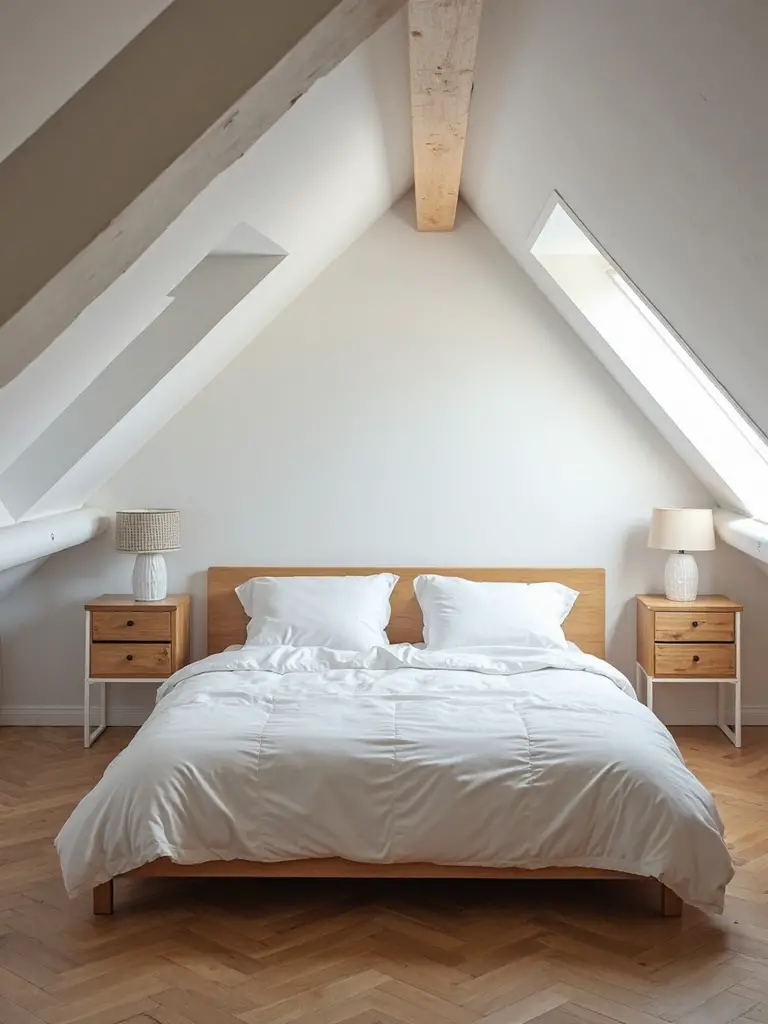
When you’re designing an attic bedroom within your living space, selecting the right headboard becomes critical for maintaining that open, spacious feeling you’ve worked to create. In small attic living areas with low ceilings, bulky headboards can overwhelm the space and block precious natural light from reaching your room.
Choose lightweight, slatted designs or skip the headboard entirely to keep sightlines unobstructed. Neutral tones like whites, creams, and soft grays reflect light throughout your attic space, making it feel larger. These minimal choices prevent your sleeping area from feeling cramped while preserving the essential atmosphere for comfortable attic living.
Add Texture With Beadboard Accent Walls
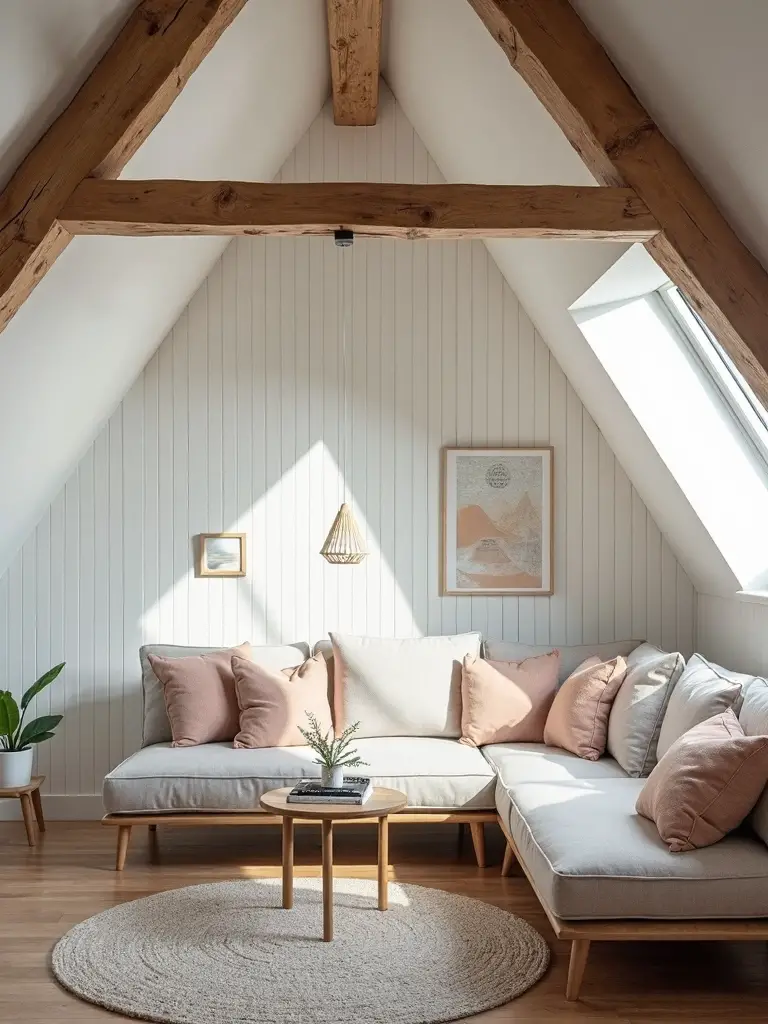
Beadboard accent walls effortlessly alter your attic living room’s plain surfaces into visually arresting focal points that commemorate the space’s unique structural character. You’ll create substantial visual interest by installing these textured panels vertically or horizontally to complement your sloped ceiling’s natural angles.
Paint your beadboard accent walls in matching wall colors for seamless cohesion that enhances perceived height throughout attic living rooms. This budget-friendly metamorphosis turns ordinary walls into stunning features.
Position beadboard strategically behind seating areas or along key walls to draw eyes upward, making your compact space feel remarkably more expansive and architecturally refined.
Install Skylights for Abundant Natural Light
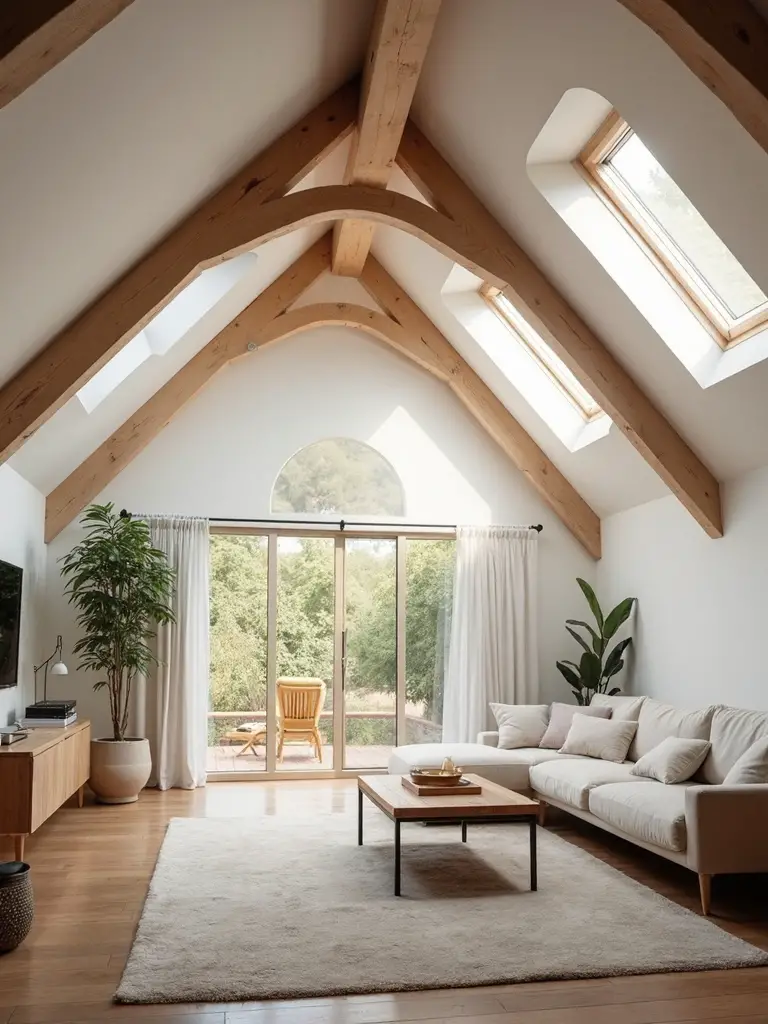
Skylights transform dark, cramped attic living rooms into bright, airy retreats by flooding your space with natural light from above. This lighting approach adds depth and visual interest while making your attic living space feel substantially larger.
Position skylights strategically above seating areas to create stunning focal points throughout the day. You’ll enhance natural wood beams and architectural details that might otherwise disappear in shadows. Install operable skylights for ventilation during warmer months, improving air circulation in typically stuffy spaces.
The combination of overhead natural light and thoughtful furniture placement creates a stylish and inviting atmosphere that rivals traditional ground-floor living rooms.
Choose Multi-Functional Furniture Pieces
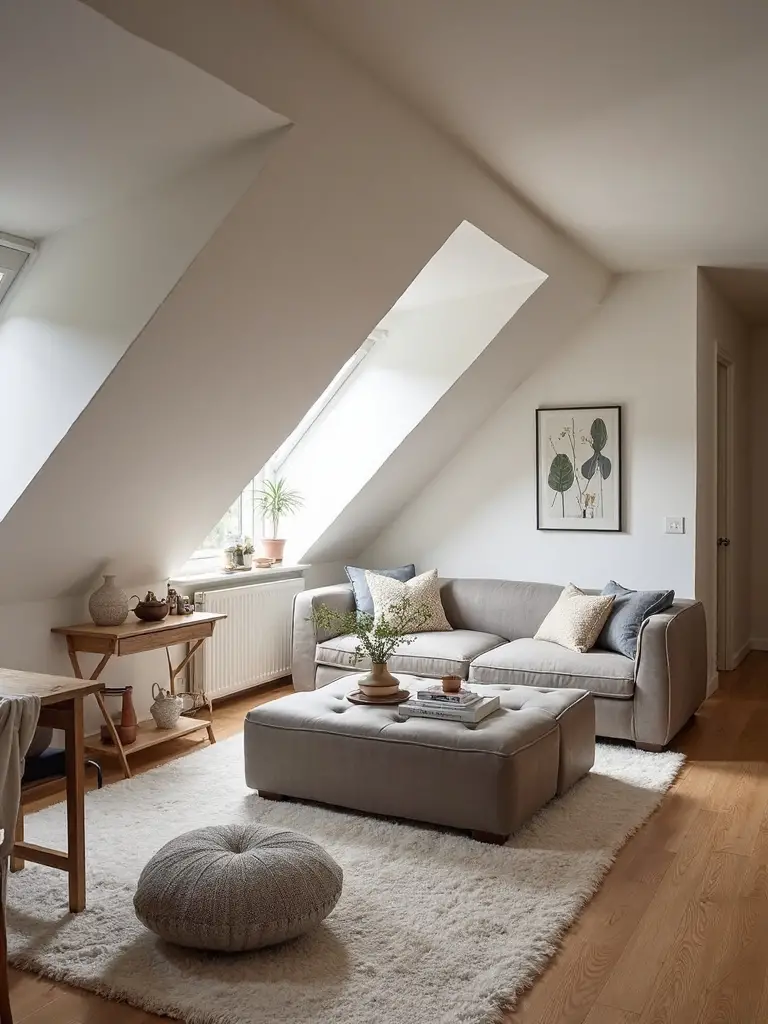
Smart furniture selection becomes even more important in attic living rooms where square footage comes at a premium and every piece must earn its place. You’ll maximize your space by choosing multi-functional furniture that serves dual purposes.
A sofa bed provides comfortable seating while offering overnight guest accommodations. Storage ottomans hide clutter while doubling as extra seating or footrests. Tall bookcases draw attention upward, making ceilings appear higher while providing essential storage.
Consider modular pieces like coffee tables that convert to dining surfaces. Low-profile media consoles blend seamlessly into your design while organizing electronics and displaying decorative items efficiently.
Create Cozy Reading Nooks in Corner Spaces
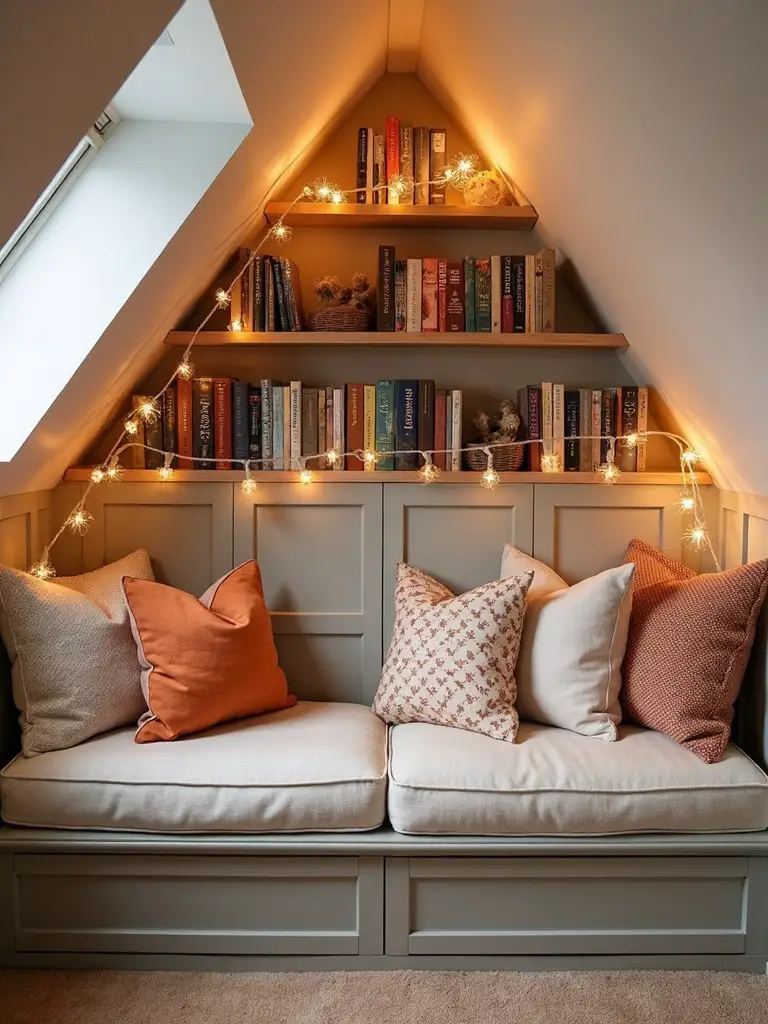
While attic spaces often feature awkward corners and angular walls that challenge traditional furniture arrangements, these unique nooks present perfect opportunities to create intimate reading retreats.
Alter dormer alcoves into functional reading spaces by installing a custom window seat with hidden storage compartments beneath the cushions. Position a comfortable armchair in naturally lit corners to maximize available space while creating your personal sanctuary.
Install wall sconces or pendant lights to provide adequate task lighting for evening reading sessions. Add plush cushions, soft throws, and decorative pillows to make your reading nook feel cozy and inviting.
Implement Strategic Lighting With Swagged Fixtures
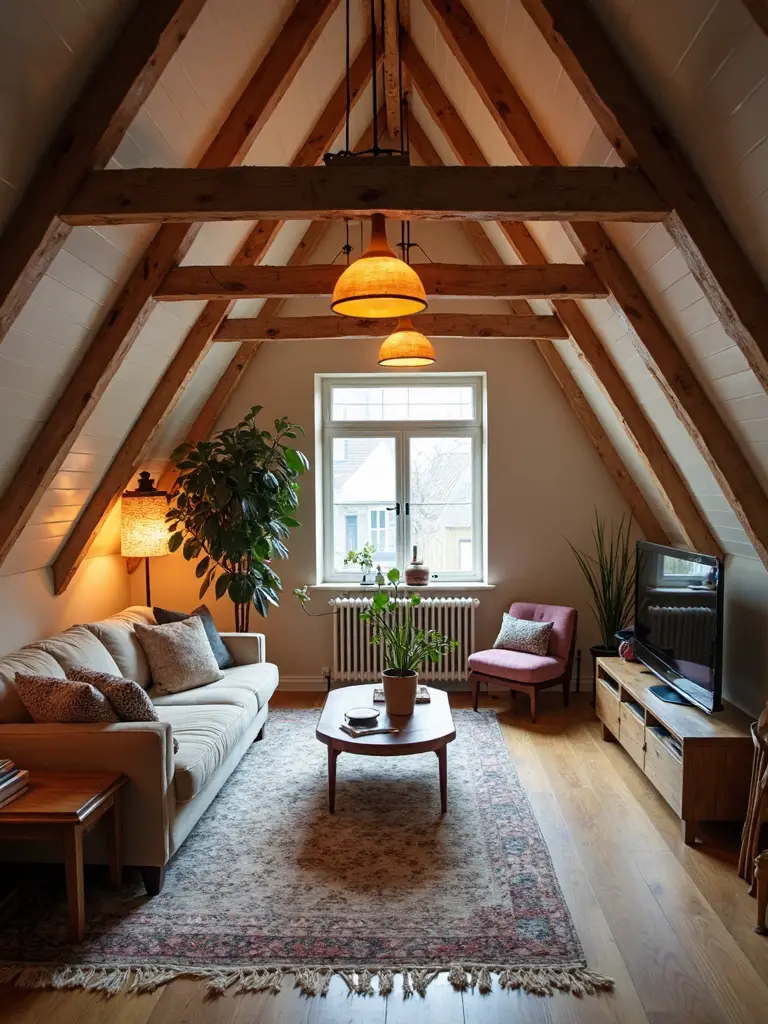
Attic ceilings present unique lighting challenges that require creative solutions, and swagged fixtures offer the perfect blend of functionality and style for these sloped spaces.
You’ll achieve ideal attic living room design by hanging pendant lights or chandeliers from ceiling hooks, then draping the cords gracefully along beams. This technique illuminates corners without overwhelming the space while accommodating awkward angles.
Position multiple swagged fixtures at varying heights to create layered lighting that’s both warm and inviting. Choose fixtures with dimmer switches to control ambiance, and consider Edison bulb pendants for creating a cozy atmosphere that alters your attic retreat.
Paint Slanted Walls to Match the Ceiling
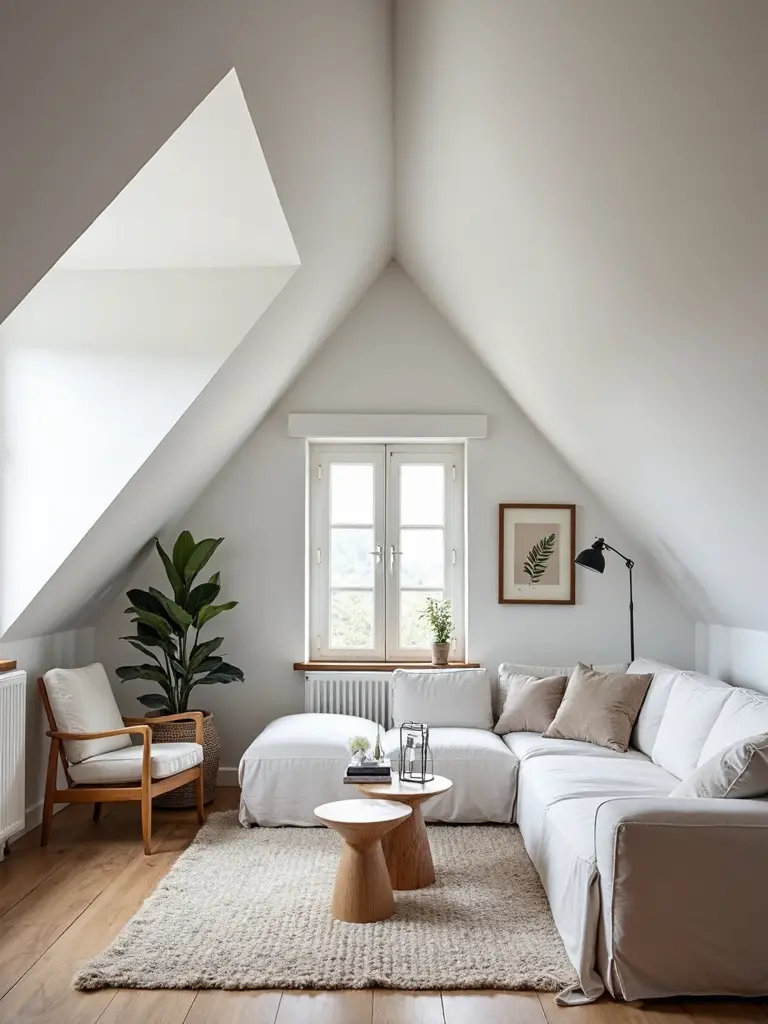
Once you’ve established proper lighting throughout your attic space, creating visual continuity becomes your next priority for maximizing the room’s potential. Painting slanted walls the same color as your ceiling makes the entire upper portion feel unified and expansive. This technique prevents the space from appearing choppy or disjointed, which commonly happens with contrasting wall colors.
Choose light, neutral tones to maintain an airy atmosphere, or create contrast with darker accent walls on vertical surfaces. This approach works exceptionally well for adding depth while drawing attention upward, making your attic living room feel substantially larger than its actual square footage.
Build Custom Corner Desks for Work Areas
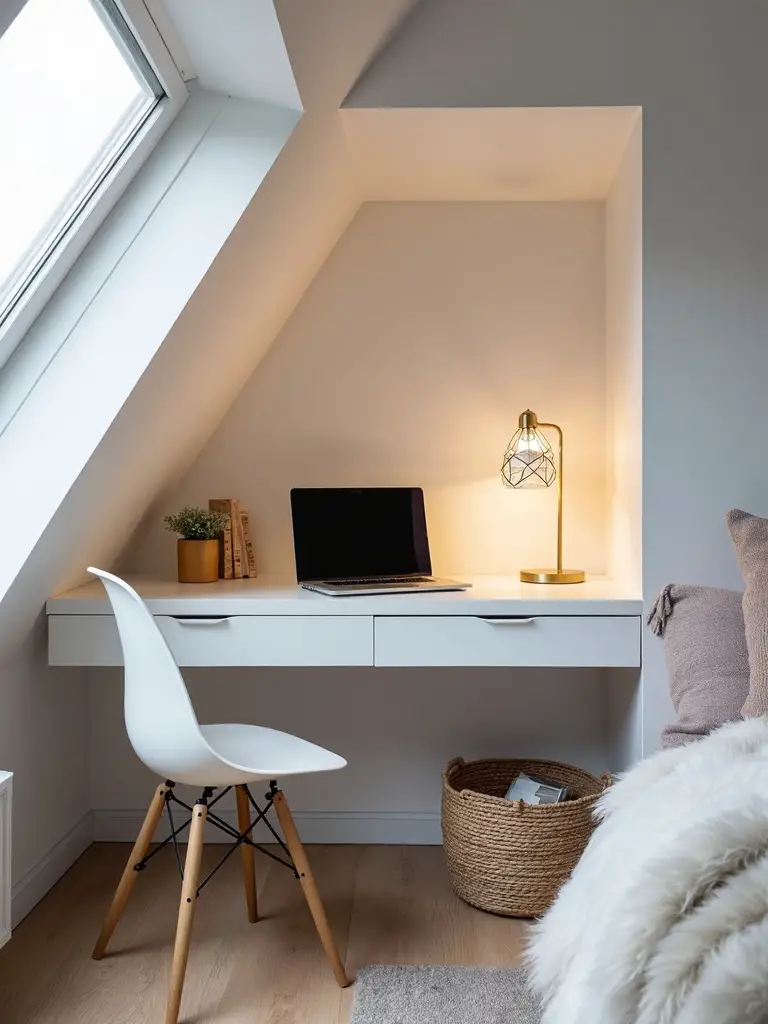
Modifying those awkward attic corners into productive workspaces requires thoughtful planning and custom-built solutions that work with your room’s unique angles. You’ll maximize functionality in small attic rooms by combining hairpin legs with OSB boards to create versatile desk-vanity combinations.
Position your workspace strategically to safeguard natural light from any built-in window while incorporating bookshelves for storage and accessibility. These custom corner designs alter unused attic spaces into efficient work areas through angled placements that follow your room’s unique geometry. Add drawers and shelving units to guarantee ample storage for office supplies and personal items.
Use Mirrors to Create Depth and Brightness
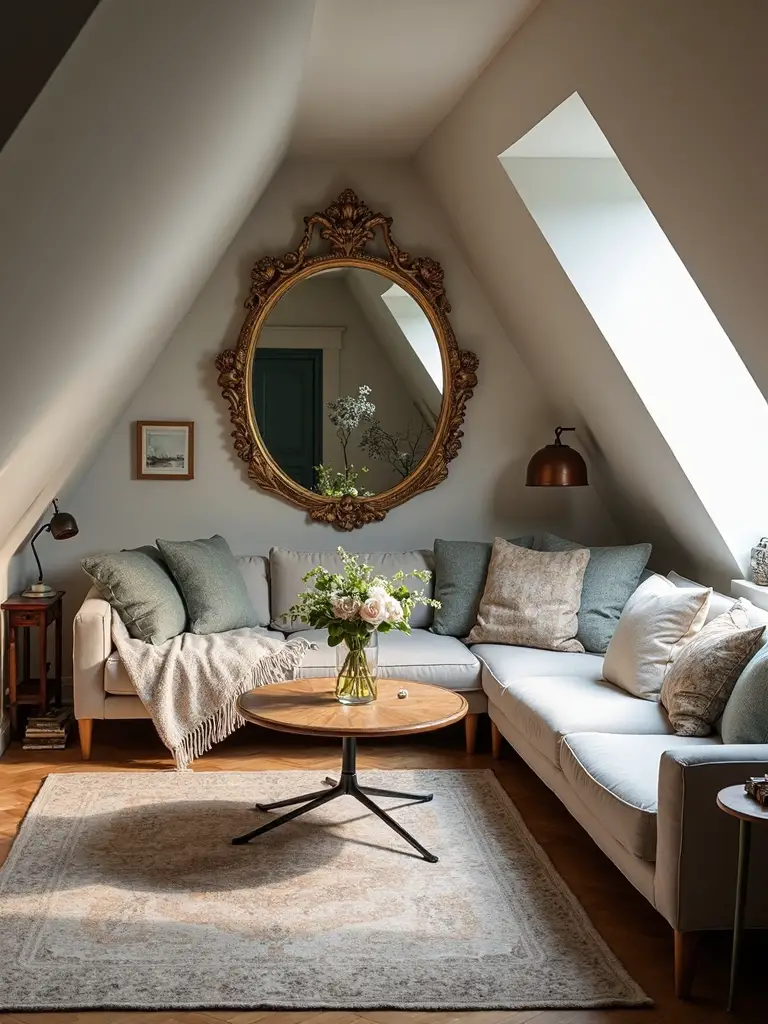
The strategic placement of mirrors alters cramped attic living rooms into bright, expansive spaces that feel twice their actual size. Position wall-mounted mirrors across from windows to reflect natural light throughout your small space, instantly making your living room feel more open and airy.
Standing mirrors in corners draw attention upward, creating visual depth that transforms converts tight quarters into seemingly larger areas.
Consider mirrored furniture like console tables or coffee tables to amplify this effect. These reflective surfaces distribute light evenly, ensuring your attic maintains consistent brightness while creating the illusion of expanded square footage.
Design Separate Zones Within Open Layouts
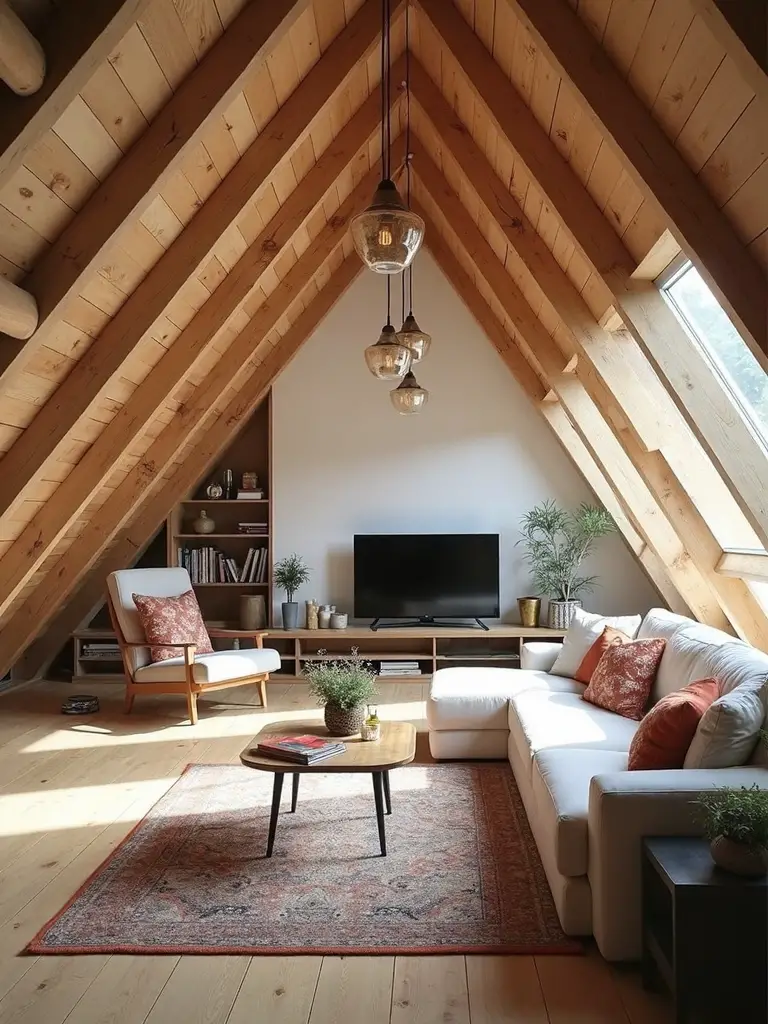
Although attic spaces lack traditional walls, you can create distinct functional areas that maximize your room’s potential without sacrificing its open feel. Position your main seating area under the highest ceiling point to establish a central gathering space.
Use area rugs to define boundaries between different living spaces without physical barriers. Create a cozy sitting area near windows by arranging chairs around a small side table.
Strategic furniture placement helps separate your living area into purposeful zones—reading nooks, entertainment spaces, or work corners—while maintaining the airy atmosphere that makes attic rooms feel spacious.
Install Window Seats in Dormer Areas
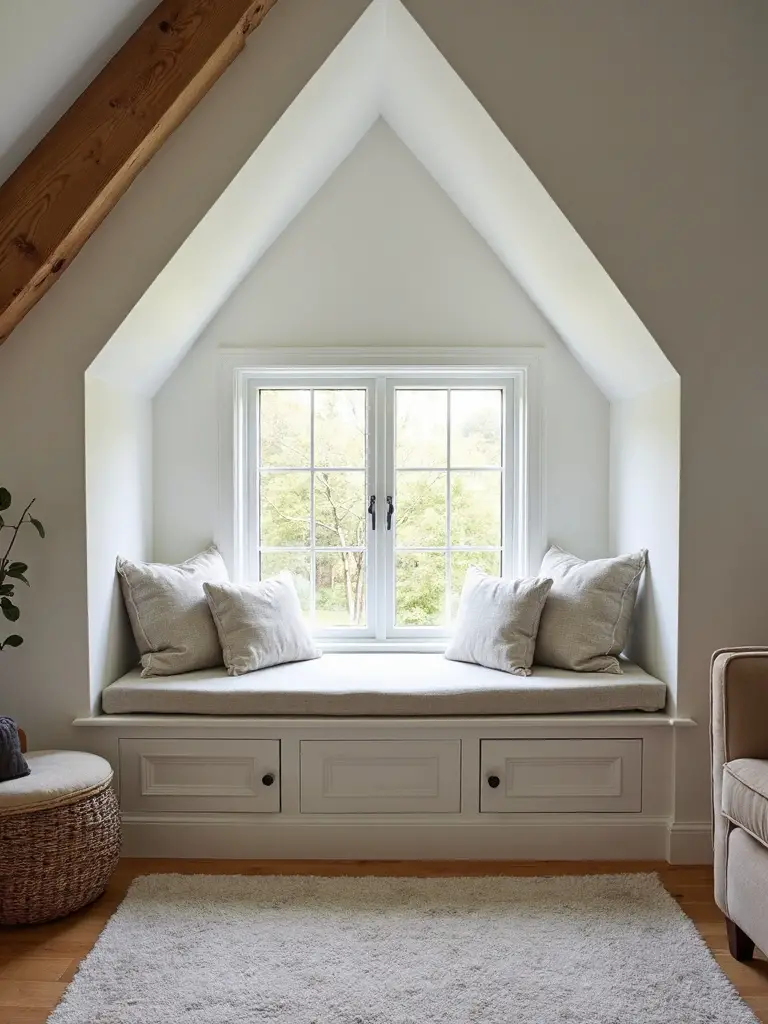
Dormer windows present unique opportunities to maximize both seating and storage in your attic living room through thoughtfully designed window seats. These cozy nooks reconfigure awkward spaces into functional design elements while making good use of every inch available.
Measure your dormer dimensions carefully to create custom-built seats that complement your attic’s unique architectural features. Add plush cushions and throw pillows to establish a perfect spot for reading a good book.
This attic design idea creates an inviting retreat without overpowering your room’s color palette, giving your attic extra square footage and plenty of space for relaxation.
Keep Color Palettes Light and Neutral
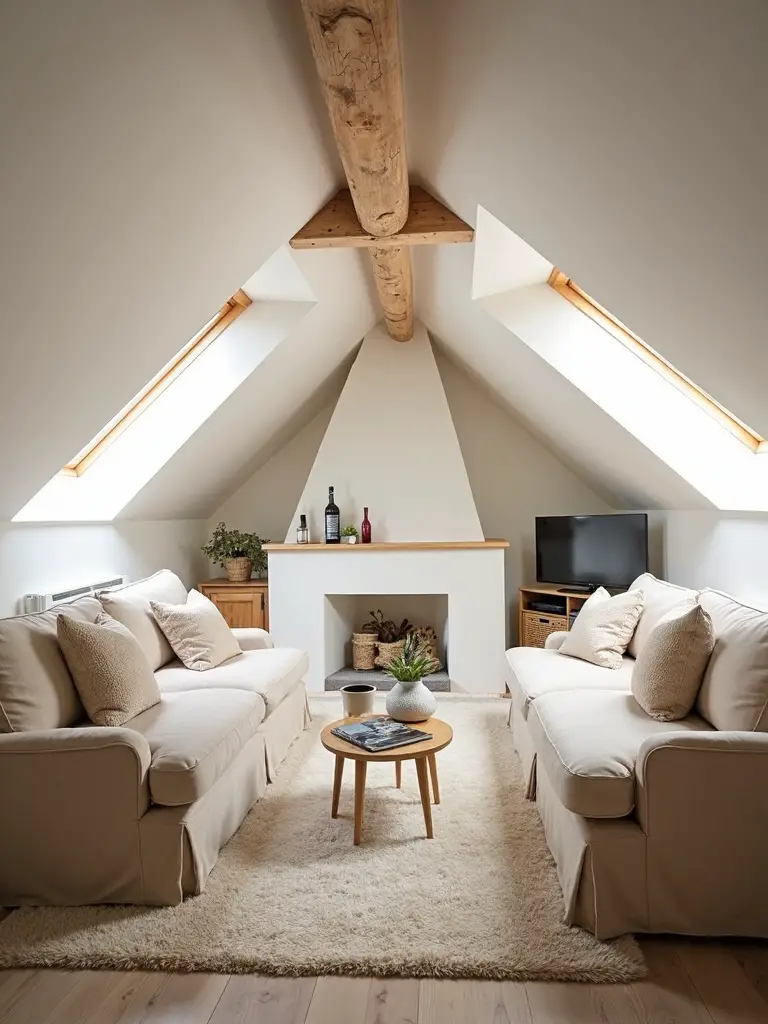
Light colors serve as your best strategy for altering cramped attic spaces into bright, welcoming living areas that feel much larger than their actual dimensions. Choose whites, creams, and soft grays for walls to maximize natural light reflection throughout your space.
Paint your ceiling the same color as walls to create visual continuity that eliminates harsh boundaries. Select furniture in light wood tones or painted finishes that complement your neutral palette. Add warmth through textiles like beige throw pillows, ivory curtains, or pale blue accents that maintain the airy atmosphere while preventing sterile appearance.
Incorporate Draped Canopies Along Triangle Walls
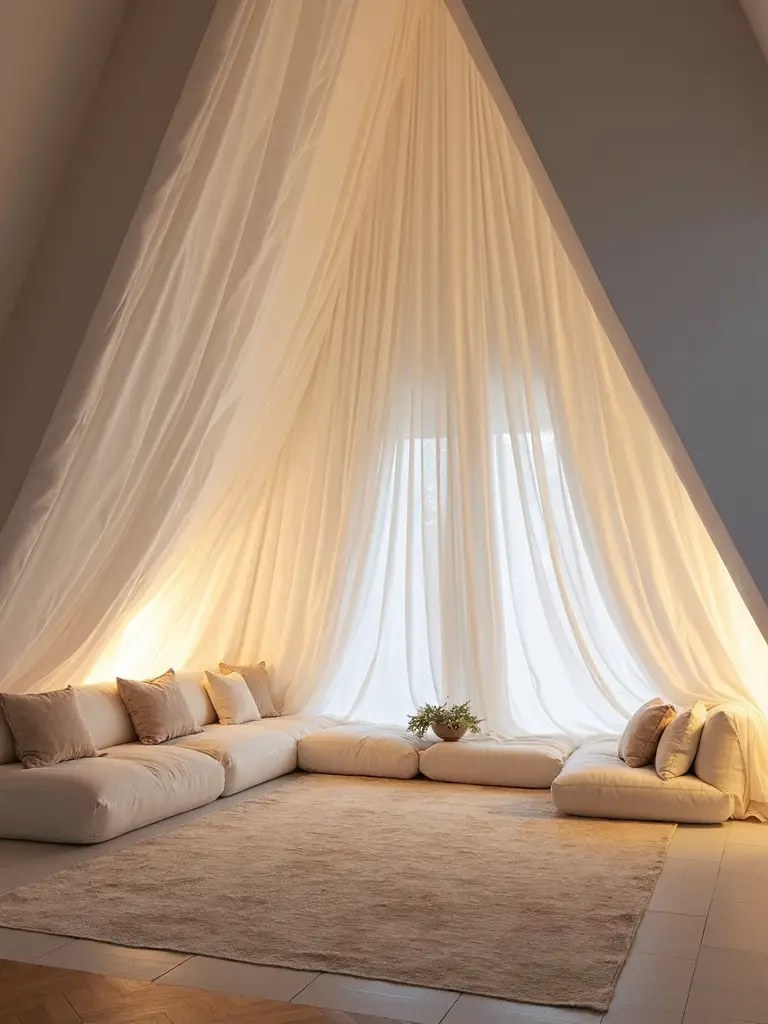
Remodel your attic’s slanted walls from structural obstacles into alluring design elements by installing draped canopies that follow the triangle’s natural lines. These cascading fabric canopies create cozy reading nooks while adding vertical interest to awkward angles.
Choose lightweight materials like cotton voile or linen for your architectural textile solutions, securing them with ceiling-mounted curtain rods or tension cables. Position dramatic drapery accents along the room’s perimeter to soften harsh angles and create intimate conversation areas.
Your suspended fabric installations will alter cramped corners into functional zones while maintaining the room’s open feel and maximizing every square foot available.
Add Built-In Entertainment Units
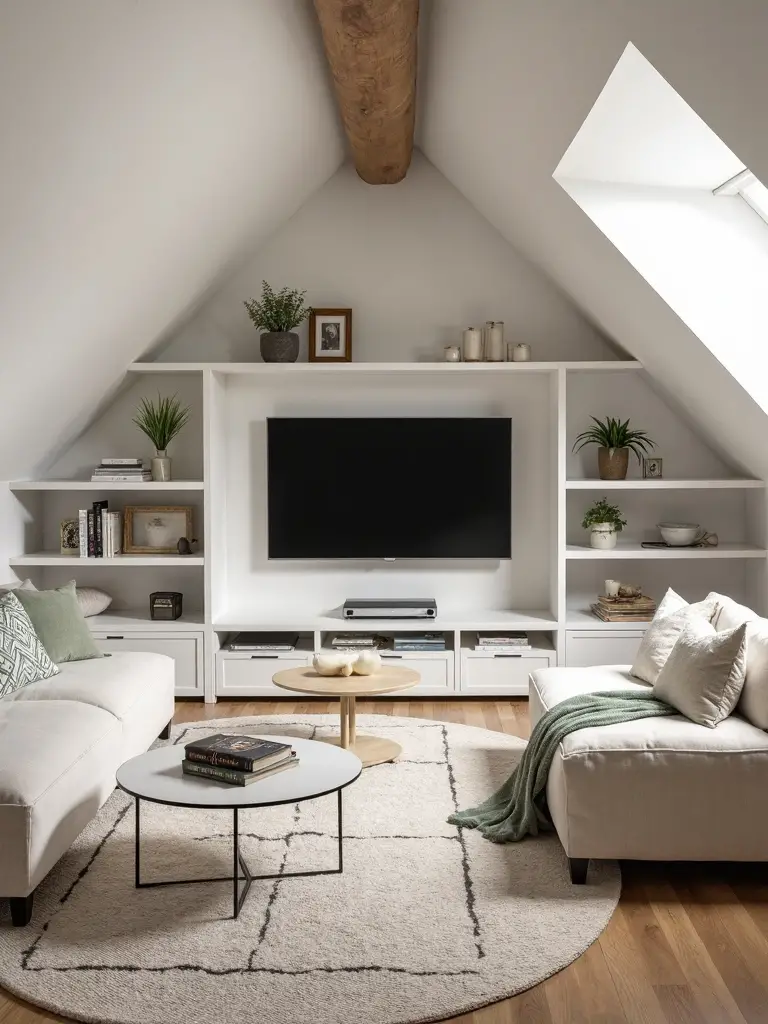
When you’re working with limited floor space in your attic living room, built-in entertainment units offer the perfect solution for creating a functional media center without sacrificing precious square footage. Custom wall-spanning units provide ample storage while maintaining seamless, uncluttered aesthetics that complement your attic’s unique architectural design.
Design your built-in with recessed display shelves for electronics and decor, plus concealed media storage to hide cables and accessories. Include integrated audio systems within the cabinetry for superior sound without visible speakers. Add proper cable management systems to keep wires organized and hidden, ensuring your entertainment area looks polished and professional.
Use Vertical Storage Solutions Effectively
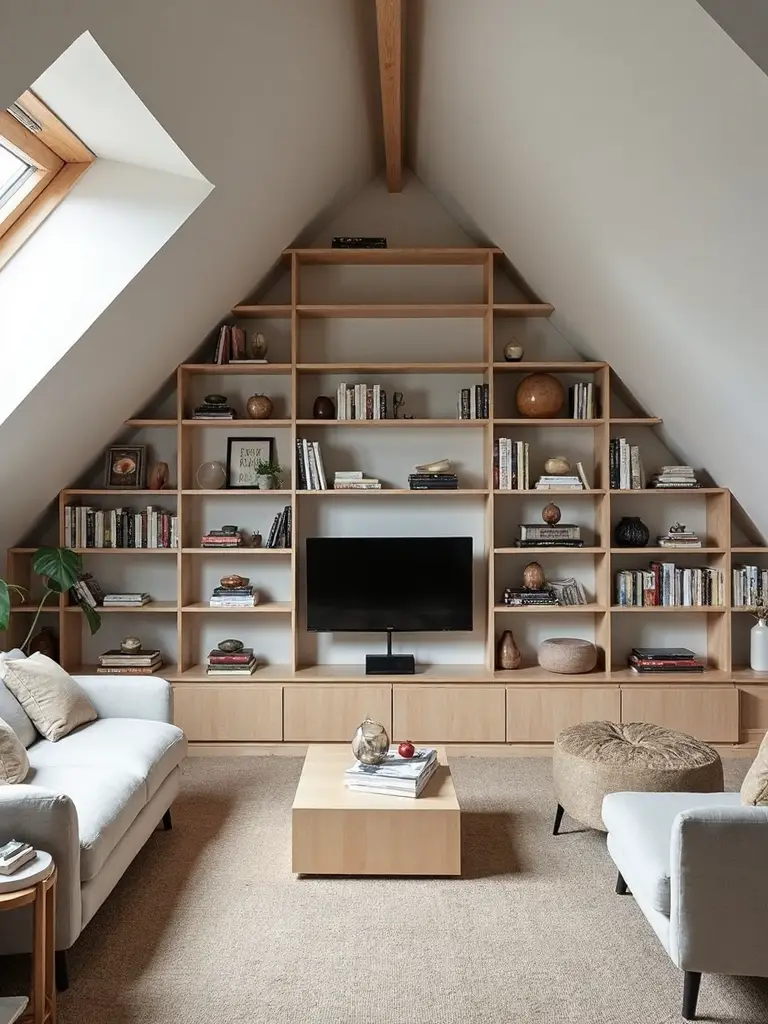
Attic living rooms demand creative storage approaches that capitalize on every inch of available wall space from floor to ceiling. Install modular storage units that adapt to your sloped rooflines while maximizing awkward corners.
Wall mounted shelving creates display space without consuming precious floor area, and you’ll appreciate how ceiling hung rods support seasonal items or rarely-used belongings overhead. Mobile storage carts offer flexibility, moving wherever you need extra organization.
Consider floor-to-ceiling bookcases that follow your attic’s unique angles, and don’t overlook pegboards for versatile hanging storage that keeps essentials visible yet organized throughout your altered living space.
Layer Rugs to Define Different Activity Areas
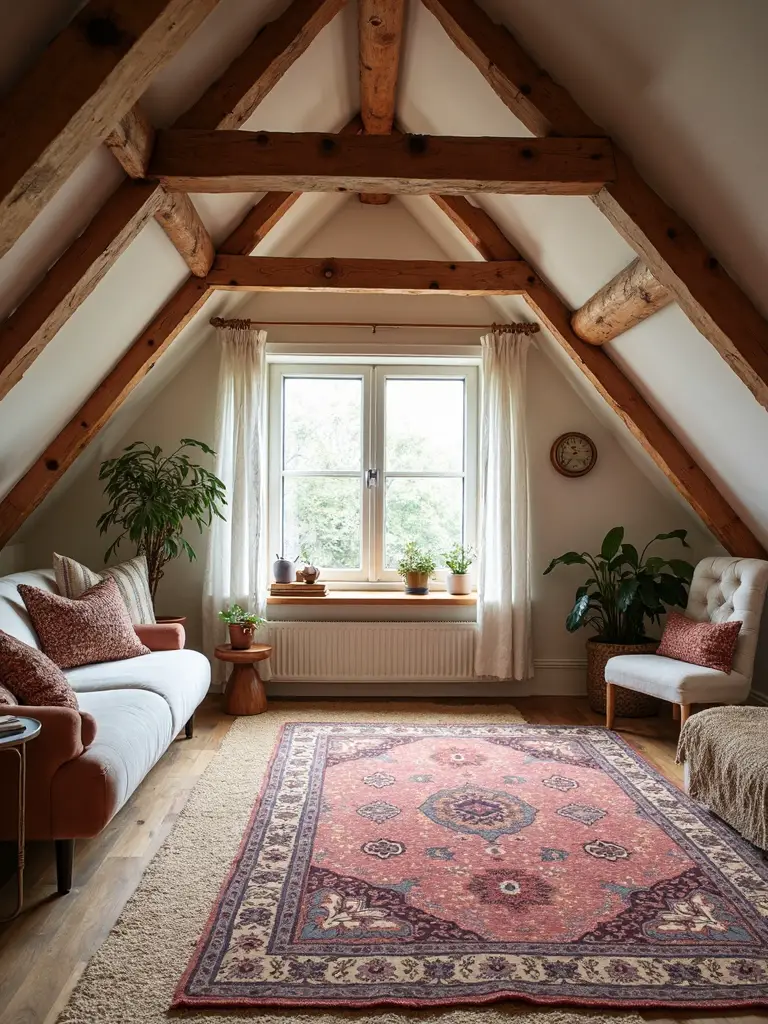
Strategically positioned rugs alter your attic’s open floor plan into distinct zones that serve different purposes throughout your daily routine. Place a large area rug under your seating arrangement to create a cozy conversation area where you can arrange furniture conversationally.
Add a smaller runner near reading nooks or workspaces to establish separate activity zones. Layer textures by combining different rug materials—pair a jute base with a soft wool accent piece. Organize with baskets positioned at rug edges for easy storage access.
Incorporate woven elements through natural fiber rugs that complement your attic’s designer features beautifully.
Conclusion
You’ve got endless possibilities to modify your attic into a stunning living space. These design strategies help you work with structural challenges while creating functional beauty. Focus on maximizing natural light, embracing unique angles, and incorporating smart storage solutions. Your sloped ceilings aren’t limitations—they’re distinctive features that’ll make your room memorable. Start with one technique and gradually layer additional elements to create your perfect attic retreat.
